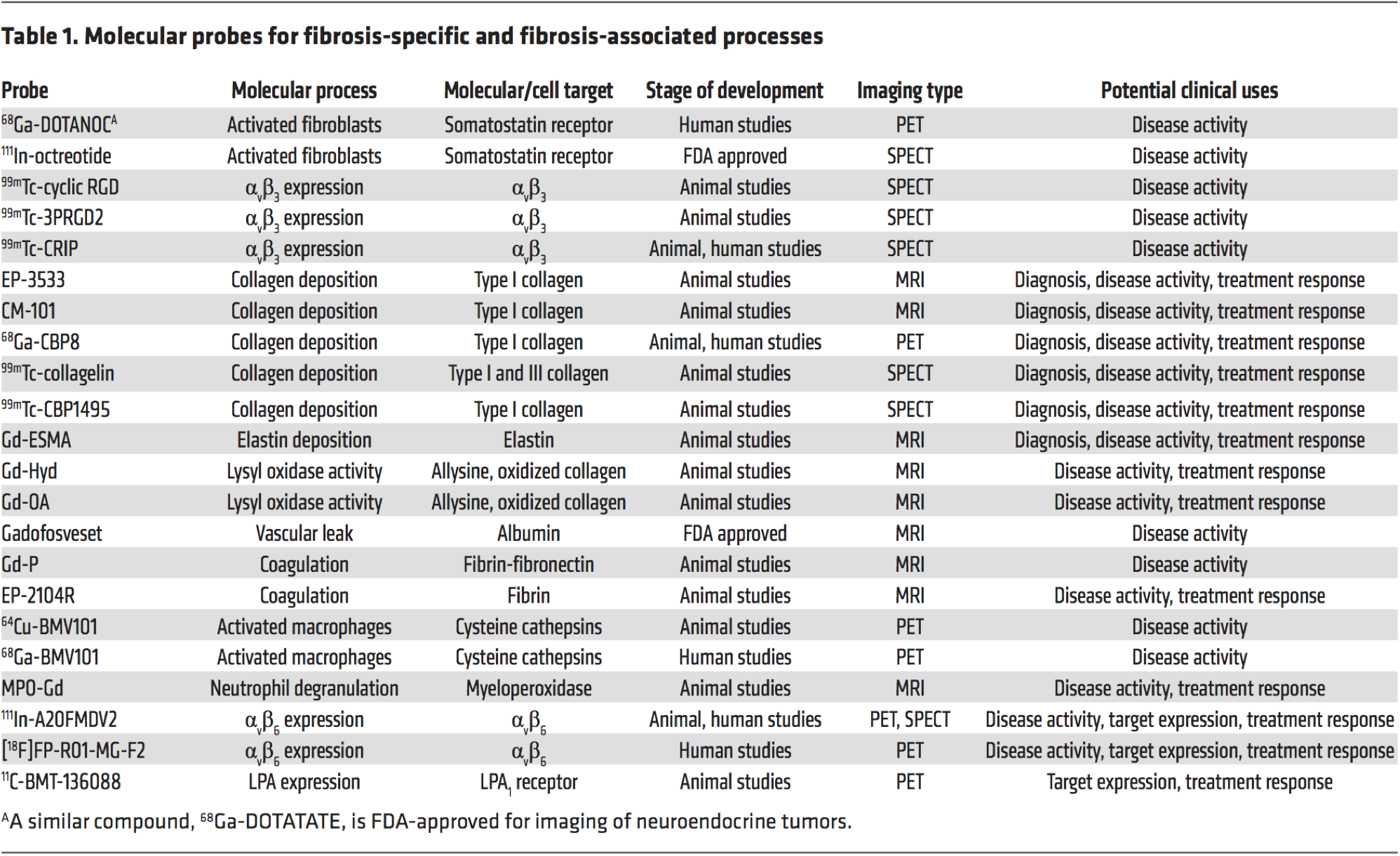博文
组织纤维化分子靶标
|||
纤维化(Fibrosis)一般性定义:一种组织过度增长,硬化,癍痕化以及细胞外基质成分如胶原过渡累积的病理性过程。通常是由各种刺激导致的慢性炎症性反应引起,这种刺激包括:持续性感染,自身免疫反应,过敏性反应,化学刺激,射线和组织损伤。
起始细胞通常认为是myofibroblast(可来源于间质细胞,EMT,EndMT,和循环骨髓干细胞分化的成纤维细胞样细胞)。
分子机制:PAMPs-PRRs;TGFbeta;CTGF;IL6(well-known fibroblast growth factor);Th2 cytokines(IL-4, IL-5, IL-13 and IL-21);others(procollagens I, III and VI, arginase-1 [66], lysyl oxidase [67,68], matrix metalloproteinase-2 (MMP-2) [69,70], MMP-9 [71,72] and tissue inhibitor of matrix metalloproteinase-1 (TIMP-1)。Inhibitors:IL10,IL-13Rα2
心肌纤维化cardiac fibrosis:Angiotensin II -> TGFβ1;Dipeptidyl peptidase-4 (DPP-4) inhibitors(sitagliptin, saxagliptin, vidagliptin, linagliptin, and alogliptin)对纤维化由抑制作用
肾小管间质纤维化tubulointerstitial fibrosis:TGFβ1,MMP2/9 -> 破坏肾小管基质膜 -> EMT -> fibrosis(indicator:FSP1); stem cell factor, IL-8 -> 趋化和活化肥大细胞(tryptase);inhibitor:BMP7(抑制TGF),HGF,urokinase cellular receptor (uPAR,可趋化和活化巨噬细胞),Bradykinin -> plasminogen activation-> ECM degradation->antifibrosis
肺纤维化:syndecan-4与Transglutaminase 2相互作用促进TG2分泌 -> TGFβ1 activation;
aminopeptidase P 可以作为毛细血管(capillary)的分子标志

参考文献
1. Mechanisms of tubulointerstitial fibrosis
2. Cellular and molecular mechanisms of fibrosis
3. Molecular imaging of fibrosis - recent advances and future directions
4. Cardiac fibrosis can be attenuated by blocking the activity of transglutaminase 2 using a selective small-molecule inhibitor
https://blog.sciencenet.cn/blog-3426442-1219303.html
下一篇:[转载]人体等效剂量换算
全部作者的其他最新博文
- • [转载]EU Regulatory Workshop – Ophthalmology – Summary and Report
- • [转载]SLE - FDA guideline
- • [转载]SLE - EMA guideline
- • [转载]Fabry Disease: Developing Drugs for Treatment Guidance for
- • [转载]EMA: NOTIFICATION OF AMENDMENTS AND RELATED MEASUR
- • [转载]Management of Adults and Children receiving CAR T-cell thera